Although there's a fast route between Baton Rouge and New Orleans on the interstate, I decided to take the scenic route along the Mississippi. Small side roads on both sides of the Mississippi from its source in Minnesota to its mouth in Plaquemines Parish south of New Orleans are together designated as The Great River Road for purposes of tourists wanting to travel along the river. While once a major thoroughfare, the river is now secondary in terms of transportation and commerce to road and rail traffic, so many of the cities and towns along the Mississippi’s length are now like places left back in time. Even the many of the bigger cities on its shores like Saint Louis, Memphis, and New Orleans are among America’s most economically sluggish. In terms of tonnage, there’s still a lots of freight moved up and down the river on barges, especially coal and grain and other products for import or export, but that kind of commerce no longer employs huge numbers of people on the river or wharves on its shore towns.
The Mississippi has become popular for river boat cruises which seem like a nice way to see part of America in style, especially if on an old-fashioned style paddle wheeler stopping in many of the cities and towns along the way
. That’s something my parents sometimes talked about but were too much of homebodies to ever do. The sort of said "Thanks, but no thanks!" when my brother and I offered to take them on such a cruise as a gift. Maybe someday I’ll do it, maybe when I’m old and cruising is more my travel speed, but by then I will probably have seen almost all the sites on shore already.
Between Baton Rouge and New Orleans the Great River Road follows the banks of the river very closely, although you rarely get a view of it from the road because of the levees built along the river for flood control. In such flat countryside the wide, muddy meandering river isn’t really the most scenic anyway and most of the towns along the river are poor and not much to look at. This stretch in Louisiana’s “Plantation Alley”, one of the greatest concentrations of Antebellum plantation houses along the river, many of which are open for visits by tourists while others function as inns or B&Bs. Most of the plantations are still in private ownership or in a few cases state historic sites
. As far as I know the federal government hasn’t come in anywhere and chosen one to be part of the National Park system, a significant hole in a system which attempts to include units that represent all eras and threads of American history and culture.
My first stop was Nottoway Plantation House, a short distance south of Baton Rouge which also functions which nowadays also functions as an inn and events venue. Built in 1859 Nottoway’s claim to fame is that it is the largest Antebellum plantation house in the South at nearly 53,000 square feet of floor space. The architecture is a mix of Greek Revival and Italianate and beautiful exterior and sumptuous interior décor make up for its lack of a sweeping entrance drive of moss-draped Live Oak trees. It’s another one of those perfect looking plantation houses, but a little different from the others I’ve seen.
About twenty miles or so downriver I came to another plantation house named Bocage. Built in 1801, Bocage is more typical of the original Louisiana style of plantation home than the grand porticoed and pillared Antebellum homes. It is unfortunately only open for events like weddings and not available for touring indoors at other times.
Probably more impressive than the historic homes and their surroundings are the many massive petro-chemical complexes that line the Mississippi River south of Baton Rouge. These huge industrial plants which refine much of America’s petroleum and transform some of it into industrial additives and plastics as well as fuels give the stretch of river its other nickname “Cancer Alley” for the elevated rates of cancers the people living in the area experience. Although I could only view them from the road at a distance, I found them to be quite fascinating. I don’t have many pictures, though, for reasons I explain in a later blog entry.
Great River Road - Nottoway & Bocage Planatations
Friday, October 29, 2010
 Plaquemine, Louisiana, United States
Plaquemine, Louisiana, United States
Other Entries
-
1Bent's Fort National Historic Site
Oct 1910 days prior Las Animas, United Statesphoto_camera22videocam 0comment 0
Las Animas, United Statesphoto_camera22videocam 0comment 0 -
2Alibates Flint Quarries Nat Park & Texas Panhandle
Oct 209 days prior Fritch, United Statesphoto_camera13videocam 0comment 0
Fritch, United Statesphoto_camera13videocam 0comment 0 -
3Wichita Mountains National Wildlife Refuge
Oct 218 days prior Fort Sill, United Statesphoto_camera28videocam 0comment 0
Fort Sill, United Statesphoto_camera28videocam 0comment 0 -
4University of Oklahoma - Neo-Gothic on the Prairie
Oct 227 days prior Norman, United Statesphoto_camera29videocam 0comment 0
Norman, United Statesphoto_camera29videocam 0comment 0 -
5Oklahoma City - Capital of Tornado Alley
Oct 227 days prior Oklahoma City, United Statesphoto_camera66videocam 0comment 0
Oklahoma City, United Statesphoto_camera66videocam 0comment 0 -
6Guthrie - The Sooner State's Territorial Capital
Oct 236 days prior Guthrie, United Statesphoto_camera19videocam 0comment 0
Guthrie, United Statesphoto_camera19videocam 0comment 0 -
7Vicksburg - Misissippi's Historic River City
Oct 254 days prior Vicksburg, United Statesphoto_camera57videocam 0comment 0
Vicksburg, United Statesphoto_camera57videocam 0comment 0 -
8Port Gibson & Windsor Ruins - Plantation Country
Oct 263 days prior Port Gibson, United Statesphoto_camera20videocam 0comment 0
Port Gibson, United Statesphoto_camera20videocam 0comment 0 -
9Natchez - Historic Center of the Antebellum South
Oct 272 days prior Natchez, United Statesphoto_camera80videocam 0comment 0
Natchez, United Statesphoto_camera80videocam 0comment 0 -
10Saint Francisville - West Felciana Plantation Town
Oct 281 day prior Saint Francisville, United Statesphoto_camera53videocam 0comment 0
Saint Francisville, United Statesphoto_camera53videocam 0comment 0 -
11Baton Rouge - Lousiana's Capital City
Oct 29earlier that day Baton Rouge, United Statesphoto_camera59videocam 0comment 0
Baton Rouge, United Statesphoto_camera59videocam 0comment 0 -
12Great River Road - Nottoway & Bocage Planatations
Oct 29 Plaquemine, United Statesphoto_camera31videocam 0comment 0
Plaquemine, United Statesphoto_camera31videocam 0comment 0 -
13Donaldsonville & Houmas House Plantation
Oct 301 day later Donaldsonville, United Statesphoto_camera55videocam 0comment 0
Donaldsonville, United Statesphoto_camera55videocam 0comment 0 -
14Mississippi River - Plantations and Oil Refineries
Oct 312 days later Vacherie, United Statesphoto_camera36videocam 0comment 0
Vacherie, United Statesphoto_camera36videocam 0comment 0 -
15New Orleans - The French Quarter
Nov 013 days later New Orleans, United Statesphoto_camera169videocam 0comment 0
New Orleans, United Statesphoto_camera169videocam 0comment 0 -
16New Orleans - The Garden District & Tulane
Nov 024 days later New Orleans, United Statesphoto_camera87videocam 0comment 0
New Orleans, United Statesphoto_camera87videocam 0comment 0 -
17New Orleans - Ramblings About the City
Nov 035 days later New Orleans, United Statesphoto_camera37videocam 0comment 0
New Orleans, United Statesphoto_camera37videocam 0comment 0 -
18Chalmette Battlefield & Barataria Preserve
Nov 046 days later Jean Lafitte, United Statesphoto_camera19videocam 0comment 0
Jean Lafitte, United Statesphoto_camera19videocam 0comment 0 -
19Houma - Deep in the Cajun Country
Nov 046 days later Houma, United Statesphoto_camera12videocam 0comment 0
Houma, United Statesphoto_camera12videocam 0comment 0 -
20New Iberia - Tabasco Country
Nov 057 days later New Iberia, United Statesphoto_camera10videocam 0comment 0
New Iberia, United Statesphoto_camera10videocam 0comment 0 -
21Saint Martinville - Evangeline Country
Nov 057 days later Saint Martinville, United Statesphoto_camera24videocam 0comment 0
Saint Martinville, United Statesphoto_camera24videocam 0comment 0 -
22Breaux Bridge - Heart of the Cajun Country
Nov 068 days later Breaux Bridge, United Statesphoto_camera12videocam 0comment 0
Breaux Bridge, United Statesphoto_camera12videocam 0comment 0 -
23Abbeville - The Giant Omelette Food Festival
Nov 068 days later Abbeville, United Statesphoto_camera15videocam 0comment 0
Abbeville, United Statesphoto_camera15videocam 0comment 0 -
24Galveston - Texas's Historic Seaside City
Nov 079 days later Galveston, United Statesphoto_camera18videocam 0comment 0
Galveston, United Statesphoto_camera18videocam 0comment 0 -
25Houston - Art & Culture in the Oil City
Nov 0810 days later Houston, United Statesphoto_camera59videocam 0comment 0
Houston, United Statesphoto_camera59videocam 0comment 0 -
26Rice University - Best in Texas
Nov 0810 days later Houston, United Statesphoto_camera21videocam 0comment 0
Houston, United Statesphoto_camera21videocam 0comment 0 -
27Downtown Houston - Oil Capital of America
Nov 0911 days later Houston, United Statesphoto_camera89videocam 0comment 0
Houston, United Statesphoto_camera89videocam 0comment 0 -
28The George H.W. Bush Presidential Library/Museum
Nov 1012 days later College Station, United Statesphoto_camera4videocam 0comment 0
College Station, United Statesphoto_camera4videocam 0comment 0

 Plaquemine, Louisiana, United States
Plaquemine, Louisiana, United States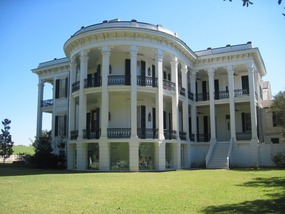
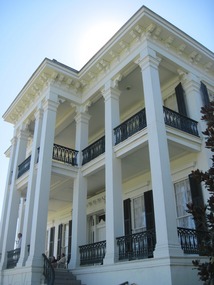

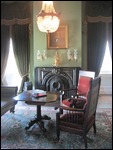

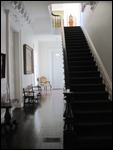
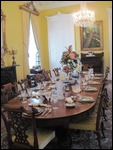
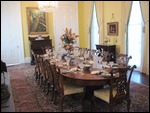

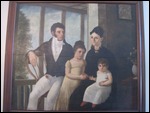
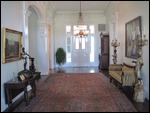
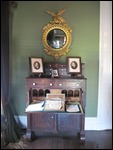
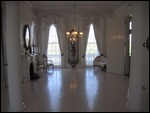
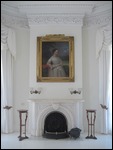

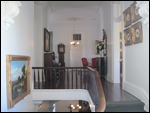

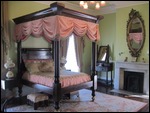
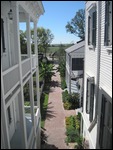

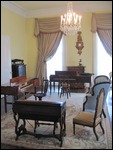

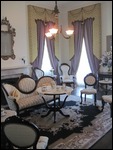
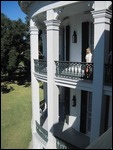

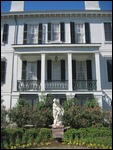
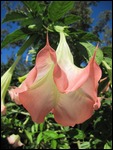

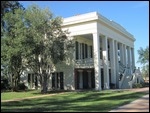
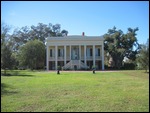
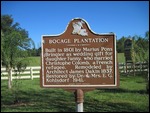

2025-05-22